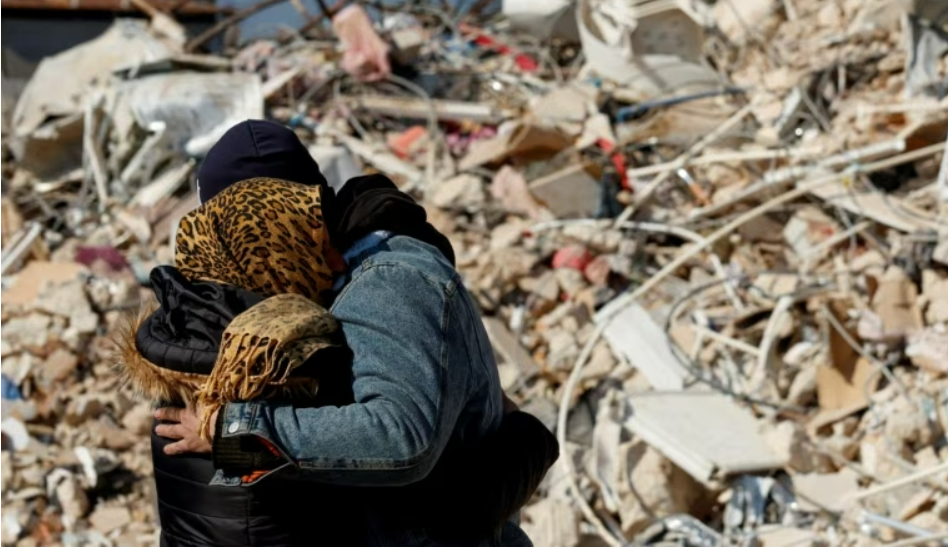In 1999, more than 17,000 people were killed in an earthquake near the Turkish city of Istanbul. In the aftermath, authorities promised stricter building regulations and introduced an “earthquake tax” aimed at improving preparedness in a country that sits on two major geological faultlines.
Ankara’s slow response to the disaster, however, played a large part in bringing Recep Tayyip Erdoğan’s Justice and Development party (AKP) to power: the newly formed party won elections in 2002 by an overwhelming majority, promising transparency and to rebuild the economy, ruined by a stock market crash.
Nearly 24 years later, after Monday’s even deadlier earthquake and aftershocks, people across Turkey are searching not just for missing loved ones but also for answers.
After another quake in 2011 in which hundreds died, Erdoğan, then the prime minister, blamed poor construction for the high death toll, saying: “Municipalities, constructors and supervisors should now see that their negligence amounts to murder.”
But with nearly 30,000 people now dead in Turkey alone – a number that continues to rise – and more than 1 million people left homeless, it is becoming clearer that endemic corruption and lax enforcement of building codes have exacerbated the crisis.
Erdoğan, now the president, made construction the engine of the Turkish economy; reliance on cheap foreign credit funded new motorways, hospitals and residential and commercial towers all over the country until the Turkish lira collapsed in 2018.
On paper, Turkish building safety standards are among the best in the world, and they are regularly updated with specific rules for earthquake-prone regions. Concrete must be reinforced with steel, and load-bearing walls and pillars must be distributed in such a way to avoid “pancaking”, when floors stack up on each other after collapsing vertically.
But Turkish and international geologists, urban planners, architects and earthquake response specialists warned for years that even many modern structures across the country constituted “rubble in waiting” because building codes had not been properly followed.
Violations were not sufficiently penalised to deter construction companies and investors from cutting corners, but experts say the problem was largely ignored because addressing it would be expensive and unpopular.
The Turkish government has periodically held so-called “construction amnesties” since the 1960s, in which construction companies and building owners have had lacking safety certification waived for a fee – a policy that is believed to have generated billions of lira. The last amnesty was in 2018, and just a few days before the latest earthquakes struck, Turkish media reported that another was due to be discussed in the cash-strapped Turkish parliament.
In the 10 affected provinces of Turkey, up to 75,000 buildings were granted such amnesties over the years, according to Pelin Pınar Giritlioğlu, the head of the Istanbul engineering and architecture union chambers.
Hospitals and other public buildings, as well as residential and commercial blocks, are among the estimated 25,000 structures that were destroyed or damaged. Proper enforcement of safety codes would have meant a “completely different picture now”, said Hakan Süleyman, a researcher in the department of earthquake engineering at Istanbul’s Boğaziçi University.
“The death toll would have been greatly reduced, as buildings that are designed to withstand earthquakes are less likely to collapse. The damage to infrastructure would have been minimised, which would have helped to speed up the recovery process,” he said. “In the long run, investing in earthquake-resistant buildings not only saves lives, but also reduces the overall cost of recovery and rebuilding after a disaster. ”
Late on Saturday, Turkey’s vice-president, Fuat Oktay, said 113 people across the country suspected of slipshod or negligent construction that may have contributed to the catastrophe had been arrested, and another 20 suspects had been identified. The developer of an upmarket 12-storey apartment complex built in Antakya in 2013 was arrested as he attempted to board a flight to Montenegro on Friday night, police said. He told prosecutors that his company had followed all the relevant procedures and legislation.
The justice ministry has promised to punish anyone found responsible, announcing the establishment of earthquake criminal investigation units, and prosecutors have begun gathering samples of buildings for evidence on materials used in construction. Many more arrests are expected, but blaming building contractors is unlikely to assuage a rising tide of public anger at government policy.
Erdoğan has pledged that reconstruction will be completed in one year, a seemingly impossible task given the scale of the destruction across a vast area. But with national elections scheduled for May that were already poised to be a crucial test after his 20 increasingly authoritarian years in power, the president’s political future is riding on how he handles the fallout.
“Building earthquake-resistant structures is not difficult … but the past has demonstrated that lessons are rarely taken after catastrophes in Turkey,” Süleyman said. “The recent earthquakes have highlighted the need for change once again, but the real test will be in the government’s ability to enforce regulations and build safer structures in the future.”
The Guardian
